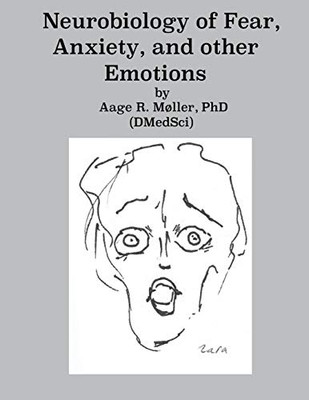

Neurobiology Of Fear, Anxiety And Other Emotions
Independently published
ISBN13:
9781081392192
$16.66
Fear and anxiety play essential roles in almost every person's life. Fear is the belief that something dangerous or unfortunate may happen in the future. Fear and anxiety are regarded to be unpleasant perceptions with few exceptions, such as the pleasure or joy that people may experience from watching horror movies. Fear and anxiety control many people's reactions to many aspects of life. However, it is well known that perceived fear is poorly related to real risks, and that is the case even when a person knows the real risk. Fear consistently overrides and manipulates facts. Fear may help someone avoid making bad or harmful choices, but it may also make people make decisions that are not beneficial. The book was written to promote a balanced understanding of fear and anxiety. The book shows that many lives could have been spared and many people could have been saved from suffering a reduced quality of life by better management of the emotion of fear and anxiety. The first chapter discusses the various definitions of fear and anxiety and how to approach an understanding of fear. Fear is one of the six innate emotions: anger, disgust, fear, happiness, sadness, and surprise. The second chapter discusses the variations of the theory of James Lange and the role of various forms of an appraisal. The role of a person's core values is discussed in connection with a person's quality of life. It also discusses the components of a good quality of life and the prerequisite for success in life. The third chapter discusses the neurobiology of emotions. The historical development of the understanding of the function of the "emotional brain" is discussed. How sensory input and memories and imaginations controls fear and anxiety is discussed. The role of the three nuclei of the amygdala in creating the actions caused by emotions, including fear and anxiety, is discussed. The roles of many other brain systems in this complex process are also discussed in this chapter.What specifically happens in the brain when a person experiences fear or anxiety is discussed in the fourth chapter of the book. Many brain systems may be activated, in connection with fear and anxiety. The fifth chapter discusses the neurobiology of threats. What to be afraid of and what not be afraid of is also discussed in this chapter. Fear is a part of the body's alarm system that can warn about the dangers of various kinds that may occur sometime in the future. Signs of danger may come from the outside the body or from the inside the body in the form of symptoms of diseases or signs of a need for fluid (thirst) or nutrition (hunger).The sixth chapter discusses how to minimize the risk of illnesses and other forms of bodily harm, and it discusses what to be afraid of and what not be afraid of. It discusses the benefits of preventive measures such as vaccination and the reasons that these benefits are not fully utilized. Some of the reasons for misuse of medications such as opioids are also discussed in this chapter.
- | Author: Aage R Moller Phd
- | Publisher: Independently Published
- | Publication Date: Jul 31, 2019
- | Number of Pages: 274 pages
- | Language: English
- | Binding: Paperback
- | ISBN-10: 1081392193
- | ISBN-13: 9781081392192
- Author:
- Aage R Moller Phd
- Publisher:
- Independently Published
- Publication Date:
- Jul 31, 2019
- Number of pages:
- 274 pages
- Language:
- English
- Binding:
- Paperback
- ISBN-10:
- 1081392193
- ISBN-13:
- 9781081392192





